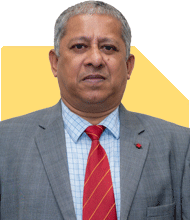How can I ensure a comfortable retirement at 40 with a 25k SIP?
Ramalingam Kalirajan |8891 Answers |Ask -Follow
Mutual Funds, Financial Planning Expert - Answered on Jan 02, 2025
He has an MBA in finance from the University of Madras and is a certified financial planner.
He is the director and chief financial planner at Holistic Investment, a Chennai-based firm that offers financial planning and wealth management advice.... more

I am a 31yr old individual.. I have just started a SIP for 25k, all are direct MFs.. what should I do to have a good retirement life by 40 yrs..
You are 31 years old, giving you 9 years to achieve early retirement.
Direct mutual funds seem attractive, but they may not always be the best choice.
To achieve retirement by 40, you need a strategic plan.
Concerns with Direct Mutual Funds
Direct funds have lower expense ratios, but they lack professional guidance.
Investors may struggle to choose and monitor funds effectively.
Regular plans, through a Certified Financial Planner, offer expert advice.
A professional monitors fund performance and aligns them with your goals.
Switching to regular plans can ensure better alignment with your retirement plan.
Steps to Build a Retirement Corpus
Your retirement goal requires disciplined investing and strategic allocation.
Diversify Your Investments
Investing in a mix of equity, debt, and hybrid funds is essential.
Allocate 60% to equity funds for long-term growth.
Choose 30% in hybrid funds for stability and moderate growth.
Allocate 10% in debt funds to manage short-term needs.
This allocation balances growth with risk management.
Increase SIPs Gradually
You can start with Rs 25,000 SIP, but aim to increase it yearly.
A 10–15% increase in SIP each year can significantly boost your corpus.
Use bonuses or increments to add to your investments.
Consider Tax-Effective Investments
Understanding the taxation rules is crucial for optimising returns.
Long-term equity gains above Rs 1.25 lakh are taxed at 12.5%.
Debt fund gains are taxed as per your income slab.
Plan withdrawals carefully to minimise tax impact.
Create an Emergency Fund
Building a robust emergency fund is critical before focusing on retirement.
Save at least 6–12 months’ expenses in a liquid fund.
Use this fund only for emergencies to protect your SIPs.
Annual Portfolio Review
Your portfolio must be reviewed regularly.
Market conditions and fund performance can change over time.
Rebalancing ensures your allocation aligns with your risk tolerance.
Engage a Certified Financial Planner for effective portfolio management.
Importance of Goal-Specific Planning
Retirement planning must account for all future expenses.
Estimate post-retirement expenses, including medical and lifestyle costs.
Factor inflation into your corpus requirement.
Without clear goals, you may fall short of your desired lifestyle.
Avoid Over-Reliance on Equity
Equity is ideal for growth, but too much exposure increases risk.
Diversify with hybrid and debt funds for steady returns.
Equity funds should focus on large-cap or flexi-cap options for stability.
Momentum or small-cap funds are not recommended for critical goals like retirement.
Monitoring and Adjustments
A consistent approach is essential, but flexibility is also needed.
Reassess your goals and progress every year.
Increase contributions if market performance is favourable.
Final Insights
You have made a commendable start with your SIP investments. To retire by 40, you need strategic planning, professional guidance, and disciplined execution. Switch from direct funds to regular plans through an expert. Diversify your portfolio with equity, hybrid, and debt funds. Maintain an emergency fund and review your plan annually to stay on track.
Best Regards,
K. Ramalingam, MBA, CFP,
Chief Financial Planner,
www.holisticinvestment.in
https://www.youtube.com/@HolisticInvestment
You may like to see similar questions and answers below
Ramalingam Kalirajan |8891 Answers |Ask -Follow
Mutual Funds, Financial Planning Expert - Answered on Jul 13, 2024
Jinal Mehta |99 Answers |Ask -Follow
Financial Planner - Answered on Jun 17, 2024
Ramalingam Kalirajan |8891 Answers |Ask -Follow
Mutual Funds, Financial Planning Expert - Answered on Jun 25, 2024
Ramalingam Kalirajan |8891 Answers |Ask -Follow
Mutual Funds, Financial Planning Expert - Answered on Jun 19, 2024
Ramalingam Kalirajan |8891 Answers |Ask -Follow
Mutual Funds, Financial Planning Expert - Answered on Nov 04, 2024
Prof Suvasish Mukhopadhyay |1156 Answers |Ask -Follow
Career Counsellor - Answered on Jun 10, 2025
Prof Suvasish Mukhopadhyay |1156 Answers |Ask -Follow
Career Counsellor - Answered on Jun 10, 2025
Prof Suvasish Mukhopadhyay |1156 Answers |Ask -Follow
Career Counsellor - Answered on Jun 10, 2025
Prof Suvasish Mukhopadhyay |1156 Answers |Ask -Follow
Career Counsellor - Answered on Jun 10, 2025
Prof Suvasish Mukhopadhyay |1156 Answers |Ask -Follow
Career Counsellor - Answered on Jun 10, 2025
Prof Suvasish Mukhopadhyay |1156 Answers |Ask -Follow
Career Counsellor - Answered on Jun 10, 2025
Prof Suvasish Mukhopadhyay |1156 Answers |Ask -Follow
Career Counsellor - Answered on Jun 10, 2025
Prof Suvasish Mukhopadhyay |1156 Answers |Ask -Follow
Career Counsellor - Answered on Jun 10, 2025
Prof Suvasish Mukhopadhyay |1156 Answers |Ask -Follow
Career Counsellor - Answered on Jun 10, 2025
Prof Suvasish Mukhopadhyay |1156 Answers |Ask -Follow
Career Counsellor - Answered on Jun 10, 2025




















